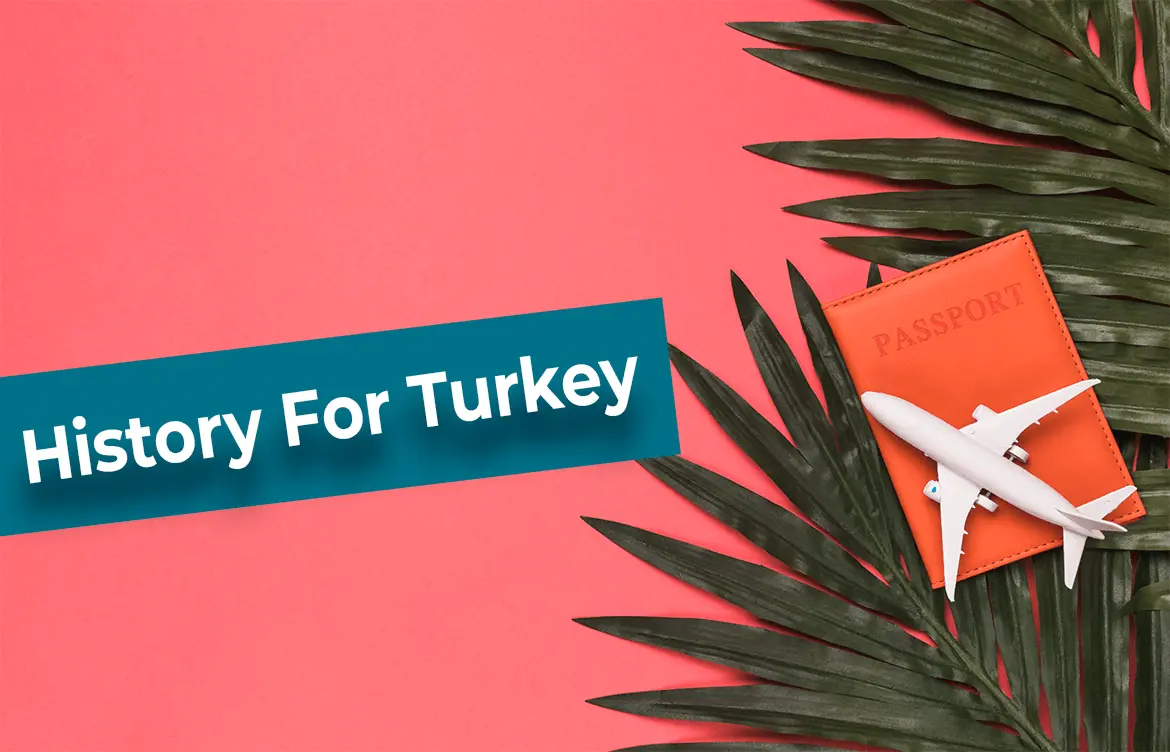Türkiye is an intercontinental country located in the Western Asia and partly in Eastern Europe. While 97% of the country is a part of Asia and is called Anatolia, 3% is a part of Eastern Thrace. It has a population of 85 million people and its capital is Ankara.
Anatolia (or Asia Minor) is an English word derived from the Ancient Greek word “Anatole” which means “the East”. This peninsula between the Black Sea, the Mediterranean Sea and the Aegean Sea has been home to humanity since the Lower Paleolithic. Some human findings in the Karain Cave in Antalya date back to 400,000 years ago. However, the oldest human construction yet discovered is Göbeklitepe in Şanlıurfa which dates back to the 10th millennium BC. In the 7th millennium BC, Anatolia started housing some Neolithic settlements, the most popular of which is Çatalhöyük in Konya. Recent findings have shown that the spread of agriculture from the Middle East to Europe in the early Neolithic Era might have been caused by the migration of Anatolian farmers into Europe.
The Bronze Age in Anatolia is marked by the influence of Indo-european languages spoken by several native peoples such as the Hattians. The organized trade in Anatolia emerged by the works of the Old Assyrian Empire which existed between the 21st century and the 18th century BC and it is known that they founded several trade colonies within Anatolia, Kanesh being the most popular one, commercing tin and textiles in exchange for copper, silver and gold. Thus, the Asyyrians introduced the scripture into Anatolia.
Although, there was no absolute power in Anatolia until the foundation of the Hittite Empire in the 18th century BC. They were centered in the north-central Anatolia in the city of Hattusha (modern Boğazkale). According to the general view, the Hittites also spoke some other form of Indo-european languages, but they were not natives of Anatolia and they had migrated from the North. In contrast to what one might think, they were assimilated into the old former peoples’ culture, preserving their language. Thanks to the record of yearly events taken down by the Hittites, called the Annals, it is possible to get an insight of what happened in Anatolia during the time of their existence until the 12th century BCE. One of the things that is learned from their Annals is that they rivaled against many civilizations of the time such as Egypt, Mitanni and Assyria. The treaty signed by the Egyptians and the Hittites after the war of Kadesh in the 13th century BC is considered the oldest treaty signed in human history.
After the collapse of the Hittite Empire in the Late Bronze Age, the Phrygians who migrated from the Balkans took control of central Anatolia. Along with them there were several peoples in Anatolia such as the Luwians and Arameans. Also in the 8th century northern Anatolia suffered the raids of Cimmerians and the Scythians. The first Greek colonies appeared in the north-eastern Anatolia in the 20th century BC and since the collapse of the Bronze Age, Mycenean Greeks in the west were replaced by Ionian Greeks. During the Iron Age, Anatolia was home to several regions with diverse cultures, religious practices and languages. The best examples are Bithynia, Paphlagonia and Pontus in the north; Mysia, Lydia and Caria in the west; Lycia, Pamphylia and Cilicia in the south; and finally Phrygia, Cappadocia, Pisidia and Galata in the center. During that time, the first coinage was born in Lydia in the 7th century BC.
In the 6th century BC Anatolia went under the invasion of the Persian Achaemenid Empire which lasted until the campaign of the great Macedonian king Alexander the Great in the 4th century BC. Alexander the Great brought together the Greek culture, native Anatolian culture and Persian culture and created what the historians call “Hellenistic culture” today. His campaign lasted 12 years until he lost his life in Babylonia when he was 32 years old. After he lost his life, all the lands he conquered were divided by the diadochi, his own generals. The diadochi and their successors had many disputes throughout many years and during these disputes another Hellenistic kingdom emerged in the west in the 3rd century, which was the Kingdom of Pergamon, ruled by the Attalid dynasty. The last king of this dynasty was Attalos III, who bequeathed all his kingdom to his greatest ally the Roman Republic in 133 BC, thus causing the introduction of the Romans into Anatolia.
The Roman Republic became an empire with the reign of Augustus towards the end of the 1st century BC, when the Romans took absolute control of the whole Anatolia. During the pax Romana (the 1st, the 2nd, and the 3rd century AD) many cities in this peninsula lived their splendor. In 395 AD the Empire was divided into two as the Western Roman Empire and the Eastern Roman Empire. The Eastern Roman Empire, also called the Byzantine Empire by the historians lived on until the Conquest of Constantinople in 1453 by Mehmed II. The Ottoman Turks ruled over Anatolia, along with Balkans, Middle East, Eurasia, and Northern Africa for many centuries of modern history until its final collapse 4 years after losing in the First World War. In year later, in 1923 the Republic of Türkiye was founded by Mustafa Kemal Atatürk and the parliament also elected him as the first president.
Today, Anatolia is still the main part of Türkiye and home to 85 million citizens of the Republic of Türkiye.
- What does “Anatolia” mean?
It is derived from the Ancient Greek word “Anatole” which means “the east”.
- When did Anatolia become a part of the Roman Republic?
Attalos III, the last king of the Kingdom of Pergamon bequeathed all his kingdom to the Roman Republic in 133 AD, making Anatolia a part of the Roman world.
- Who was the Ottoman sultan who conquered Constantinople?
Constantinople was conquered by the Ottoman sultan Mehmed II, the 7th sultan of the dynasty, in 1453.




